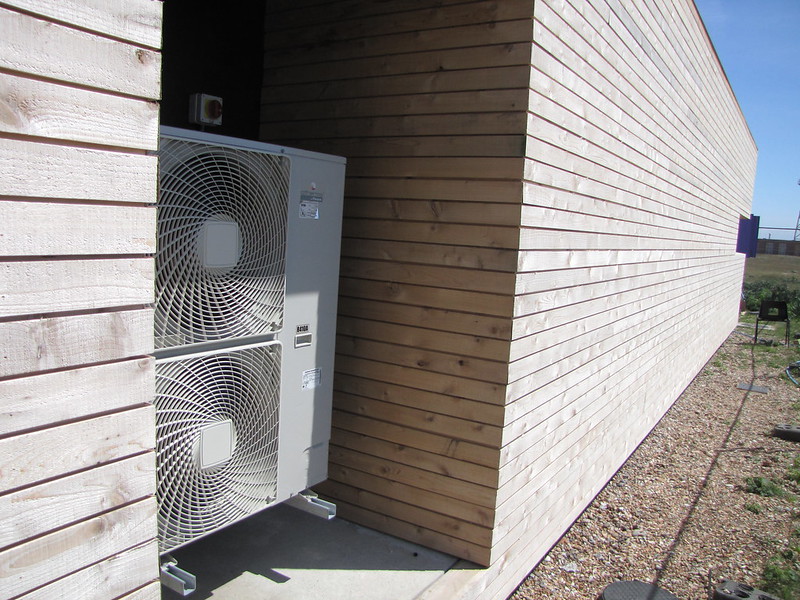Air source heat pumps have emerged as a viable alternative to traditional boilers, offering energy-efficient heating and cooling solutions for homes. If you’re considering replacing your boiler with an air source heat pump, this comprehensive guide will provide you with the technical details and expert insights to make an informed decision and successfully execute the project.
Efficiency: Harnessing the Power of Heat Transfer
Heat pumps are generally more energy-efficient than boilers because they transfer heat rather than generating it. This means they can provide both heating and cooling for your home using a single, unified system. The efficiency of a heat pump is measured by its Coefficient of Performance (COP), which can range from 2.5 to 4.5, depending on the model and environmental conditions. In comparison, a typical gas boiler has an efficiency of around 90%. By leveraging the heat transfer process, air source heat pumps can deliver significant energy savings, reducing your carbon footprint and utility bills.
Temperature Output: Adapting to Low-Temperature Heating
One of the key considerations when replacing a boiler with an air source heat pump is the temperature output. Boilers typically generate high-temperature water (around 80°C) to power traditional hydronic heating systems, such as radiators. In contrast, heat pumps generally operate at lower temperatures (around 35-55°C) to achieve optimal efficiency.
To address this mismatch, you may need to retrofit your heating system by replacing the existing radiators with low-temperature models designed to work with heat pumps. These low-temperature radiators have a larger surface area, allowing them to effectively transfer heat at the lower temperatures produced by the heat pump. Alternatively, you can consider installing underfloor heating, which is well-suited for the lower temperatures of heat pump systems.
System Sizing: Matching the Heat Pump to Your Heating Needs
Proper system sizing is crucial when replacing a boiler with an air source heat pump. Heat pump technology has varying degrees of efficiency as the outdoor temperature drops, and the capacity of the heat pump can decrease in colder climates. To ensure your heat pump can meet your heating demands, you’ll need to carefully assess the heating load of your home, taking into account factors such as:
- Insulation levels
- Air tightness
- Window area
- Room sizes
- Desired indoor temperature
By accurately calculating the heating load, you can select a heat pump that is properly sized to meet your needs, even during the coldest days of the year. Oversizing or undersizing the heat pump can lead to inefficient operation, reduced performance, and higher energy costs.
Installation: Ensuring Proper Sizing, Placement, and Commissioning
Replacing a boiler with an air source heat pump requires careful planning and execution. The installation process involves several critical steps:
- Site Assessment: Evaluate the physical space available for the heat pump unit, ensuring it is placed in an optimal location with adequate airflow and accessibility for maintenance.
- Electrical Upgrades: Determine if your home’s electrical system can handle the increased power demand of the heat pump, and make any necessary upgrades to the electrical panel or wiring.
- Refrigerant Piping: Properly install the refrigerant piping between the indoor and outdoor units, following the manufacturer’s guidelines and local building codes.
- Condensate Drainage: Ensure the heat pump’s condensate drainage system is properly installed to prevent water damage and maintain efficient operation.
- Commissioning: Have the system commissioned by a qualified professional to ensure it is operating at peak efficiency, with all components functioning as intended.
Proper installation is crucial for the long-term performance and reliability of your air source heat pump system. Engaging a licensed HVAC contractor with experience in heat pump installations can help ensure a successful project.
Cost Considerations: Balancing Upfront Costs and Long-Term Savings
While air source heat pumps often have a higher upfront cost compared to traditional boilers, they can provide significant long-term savings through reduced energy bills. The initial investment for a heat pump system can range from $5,000 to $15,000, depending on the size of your home, the complexity of the installation, and the specific model you choose.
However, the energy savings from a heat pump’s superior efficiency can offset the higher upfront cost over time. Depending on your local energy rates and climate, you may be able to recoup the additional investment within 5 to 15 years through lower utility bills. Additionally, some regions offer incentives, rebates, or tax credits to encourage the adoption of energy-efficient heat pump systems, further improving the overall cost-effectiveness of the investment.
When evaluating the cost of replacing a boiler with an air source heat pump, consider the long-term operational savings, potential incentives, and the environmental benefits of reducing your carbon footprint.
By carefully considering the factors of efficiency, temperature output, system sizing, installation, and cost, you can make an informed decision and successfully replace your boiler with an air source heat pump. This comprehensive guide provides the technical details and expert insights to help you navigate the process and ensure a successful DIY project.

